
Lirac 2020
AOC Lirac, Pères de l'Eglise, 750 ml

Description
Lirac, a wild and romantic wine growing region from the southern part of the Côtes du Rhône, produces this fruity and spicy wine. The nose is dominated by cassis, sour cherries, spicy wild berries and dry herbs from Provence. On the palate, a good balance between "terroir sweetness", southern French spice and a soft, sligthly velvety texture make it an interesting accompaniment to food.
Attributes
| Origin: | France / Rhône / Lirac |
| Grape variety: | Grenache, Syrah, Carignan |
| Ripening potential: | 2 to 8 years |
| Drinking temperature: | 16 to 18 °C |
| Food Pairing: | Spiced grillades, Saddle of lamb fillet with herb jus, Wild fowl, Hot vegetable curries |
| Vinification: | partly destemmed, fermentation in cement tank |
| Harvest: | hand-picking |
| Maturation: | in cement tank, in used barriques |
| Bottling: | filtration |
| Volume: | 15.0 % |
| Note: | Contains sulphites |
Domaine des Pères de l'Eglise
In 1933, the winegrowers and wine merchants of Châteauneuf-du-Pape were the first to impose quality rules relating to the cultivation and production of wines that would bear the name Châteauneuf-du-Pape. The geographic definition of the cultivation area, along with the other regulations, is still in force today, in order to guarantee the wine quality for connoisseurs. The Gradassi family of the Domaine des Pères de l’Église is following the tradition, but with the fresh impetus provided by the young fourth generation.
The fourth generation is represented by Laetitia, who after completing a course in business studies spent two years in Australia and New Zealand, in order to gather experience in wineries there. In 2014, she joined her father and uncle in the family wine estate. However, following her father’s unexpected death, she soon had to assume responsibility for the cellar. Her uncle, Serge Gradassi, predominantly takes care of work in the vineyard.
Since 2001, the best wines have been bottled under their own domaine name. Before then, the wine was sold directly to the trade. The family owns 19 hectares, of which approximately 15 are split into numerous plots spread across the entire Châteauneuf-du-Pape region. Unbelievably, the average age of the vines is 80 years. The family even owns a vineyard which, in 1885, was planted by the great-grandfather as a mixed culture comprising all 13 grape varieties permitted under the appellation.
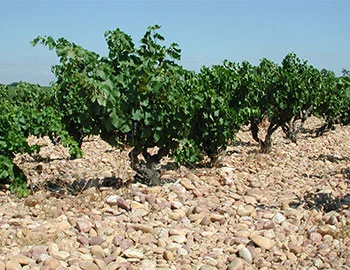
Grenache
Grenache seldom comes alone
Spaniards and Sardinians make the Grenache contentious: both claim it originated from their country. In fact, it had already appeared in both places by the 16th century. But a large number of mutations in Spain indicates that it has deeper roots on the Iberian Peninsula. The Grenache is meaty and spicy, with a wonderful, fruity sweetness and rich aromas of blackberry, cassis, plums and pepper. Under the name Garnacha, it contributes fullness to the Rioja. In Sardinia it is called Cannonau, where it yields strong, expressive wines. But its stronghold is in France. Grenache is the star in Châteauneuf-du-Pape and streams into many other assemblages from the south. Its preferred partners are Syrah and Mourvèdre. This blend is also very popular abroad. In Australia, these wines are simply called "GSM".
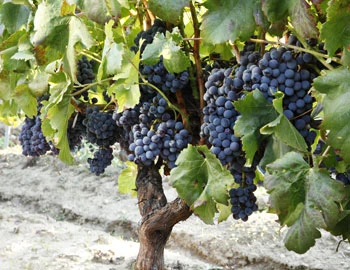
Syrah
A hint of pepper
The legend stubbornly persists that the Syrah variety came from the Persian city of Shiraz. Yet, researchers have shown that it is a natural crossing of two old French varieties: the red Dureza from the Rhône Valley and the white Mondeuse blanche from Savoy. Wines from Syrah are gentle and concentrated. They smell of dark berries, violets and liquorice, and amaze with a piquant touch of white pepper. As varietal wines, they are found on the northern Rhone, as in the Hermitage or Côte Rôtie appellations, as well as in Swiss Valais. In the southern Rhône Valley, Syrah is often wedded with Grenache and Mourvèdre. In 1832, a Frenchman brought the variety to Australia, where it became the emblem of the national wine industry. There, the weightiest versions develop with typical notes of tar and chocolate.
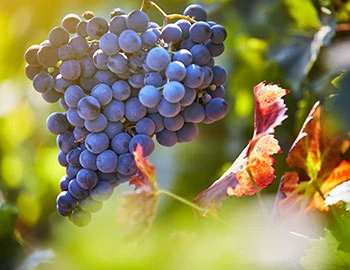
Carignan
Fervid oddball
The red Carignan is a heat-loving Mediterranean grape. It has a bit of everything over other varieties: more colour, more tannins, more acid. It is not easy to press a harmonious wine from it alone. Hence it is most often encountered as a blend partner, as in the Côtes du Rhône wines. In Spain it is called Mazuelo and is part of the traditional Rioja recipe. It provides the wines’ acidic backbone. The most exciting varietal specimens come from the slate slopes of the Catalan Priorat (named here Cariñena), from old bush vines in Chile or from Sardinia, where it is known as Carignano. When pressed properly, this oddball generates a lush bouquet of plums and dark fruits. Its origins lie in the northwest Spanish Aragon, near the town of Cariñena. The surrounding wine area is also named after it. In order to prevent confusion with the vine, it is called Samsó there.
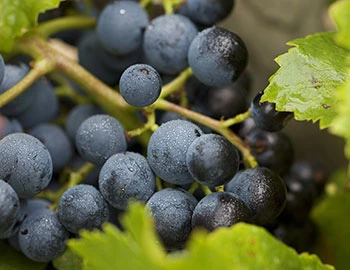
Rhône
Rhône: northern power, southern charm
The Rhône’s source is in Valais, and it flows into the Mediterranean 800 kilometres to the south. In the last 200 kilometres of its course, it is lined with vines which yield a range of red crus that are among the most prestigious wines in the world – for example, on the spectacular cliffs of the Hermitage Mountains, or in the gravelly terraces of Châteauneuf-du-Pape. The river valley, however, is also a rich source of characterful white wines and affordable, high-quality, everyday red wines.
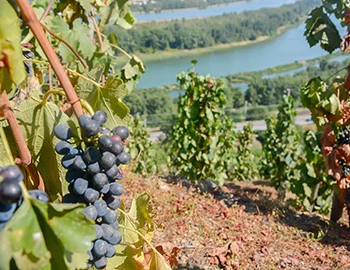
France
France – Philosophy in a bottle
According to French philosophy, wine should be an expression of the soil and climate. They use the word “terroir” to describe this. Terroir makes every wine different, and many especially good. French wine is regarded worldwide as an expression of cultural perfection. The French believe that humans are responsible for the quality of the berries, the vine variety for their character, and nature for the quantity. This philosophy can be expressed succinctly as: “the truth is the vineyard, not the man.”


